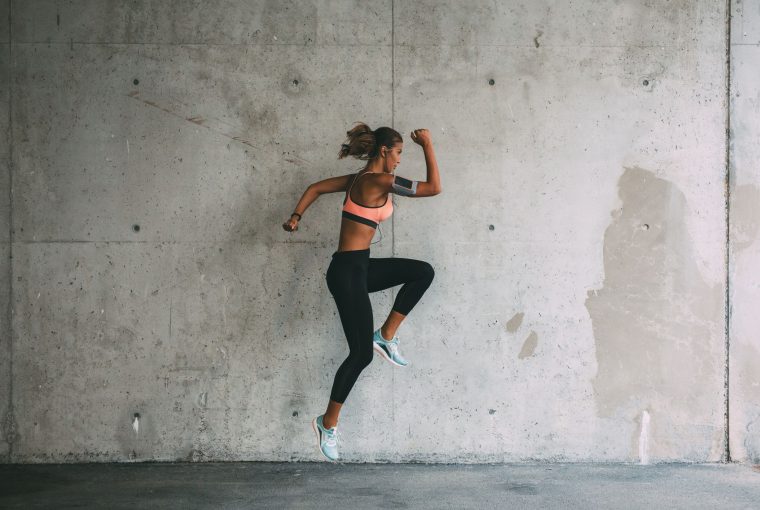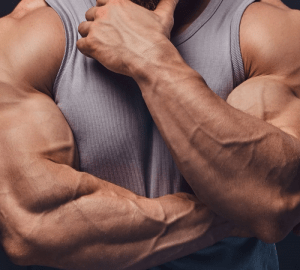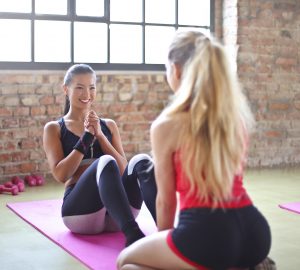A functional workout is one that will have a lasting impact on ones living outside of the gym.
Functional Fitness is so much more than just a fancy name for a certain style of training. This training style serves a purpose that is far beyond the workout itself. “Functional Fitness trains your muscles to work together and prepares them for daily tasks by simulating common movements you might do at home, at work, or in sports.” -Mayo Clinic. The main purpose of functional training is to not only better improve one’s health and fitness levels but more importantly their performance of everyday activities such as walking up and down stairs, carrying in the groceries, or even sitting up and down from a chair.
Functional exercises will often include different compound exercises. A compound exercise is one that uses more than one muscle group at a time. By engaging numerous different muscles in one exercise makes these exercises functional as they help simulate how the body needs to be able to work together and use different muscles all at once. In order to perform daily activities without struggle and/or pain this proper muscle recruitments need to happen. Many exercises will also be multiplanar, incorporating forward, backward, side to side, and rotational movements. These multiplanar movements assist with better balance, coordination, agility, and injury prevention as the body is getting used to being moved in different directions while maintaining strong and stable body alignment.
Functional Fitness Vs. Weight Training:
Now, you may be thinking, will functional training still assist in strength gains or is it strictly to assist in my daily living?
Functional training will assist in both strength and daily living. Often times people think that in order to achieve strength gains they only need to lift heavy weights, although this will assist in gaining strength, functional training can assist you to build both muscle, aerobic capacity and therefore, a better quality of life.
Think about this scenario. How often will you need to do a leg extension in a real-life activity? Probably never. Now, while still building up leg strength we can perform a functional movement such as a bodyweight squat or a variation of a loaded squat. This will still be promoting strength gains while prepping the body for real life activities such as sitting down and getting up from a chair. The difference of a squat (functional exercise) vs. the leg extension (weight training exercise) is the squats require multiple muscles in the legs to be used at once, which causes these muscles to all get stronger and more efficient at working together. This will improve activities outside the gym that require these muscles to fire all at once and have the body work together as one strong unit.
6 Health Benefits from Functional Fitness Training:
Improve movement efficiency
Whether you are an elite athlete that is trying to compete at a high level of your sport or if you are someone who is looking to be able to move around your day without pain or struggling, functional fitness training can help you. This style of training improves both sport related and daily living movement efficiency in the sense of working multiple muscles in one movement.
Prevent Injuries
As functional Fitness movements develop the entire body this will assist in creating one strong unit that can work together and protect against injuries. By training the body to be able to change directions quickly and stabilize will help limit the amount of injuries that could have happened due to immobility and/or lack of agility built up.
Improve posture and core strength
Whether your goal is to have a ripped 6-pack or not, building up a strong core is the foundation to not only performing well in the gym but also outside throughout your day. Functional Training focuses on developing the core muscles to assist in supporting and stabilizing the trunk throughout activities while maintaining proper balance. This is super important in order to be able to perform daily tasks safely.
Increase Mobility
Functional movements focus on taking your joints through full range of motion, which also require the stabilizing muscles to engage to protect our bodies from injury. Many functional movements that require flexibility and mobility also require power and explosiveness. This is why these types of movements limit our risk of injury as we are improving the mobility of our joints while also increasing the muscles strength and power. Due to this combination in movements, we also build up stronger connective tissue to protect our ligaments and tendons. This increased range of motion is what increases our mobility and allows us to move more freely and efficiently inside and outside of the gym while reducing the risk of injuries.
Improve Aerobic Capacity
Traditionally, functional fitness training will either be in the form of a circuit, performing as many reps as possible, or on a certain time clock. The format of these workouts is what makes them very high intensity as you are constantly moving from one exercise to the next. By performing total body movements while under fatigue will increase the heart rate and allow for aerobic fitness gains to be made.
Increase Lean Muscle Mass
As functional fitness training incorporates movements where different muscle groups are targeted at once helps to build leans mass on the entire body. As functional training does not isolate one muscle group at a time this assists in making the entire body become stronger as a whole and therefore be able to function as one strong unit inside and outside of the gym.
5 functional movements you can try in your next workout:
- Box Step Ups
Improves: balance and coordination as well as assist in developing strength, power, and stabilization in the leg, hips, knees, and ankles.
Function: Simulate and assist in better performance of going up and down stairs safely, by working stability while having load on one leg at a time.
- Suitcase Dumbbell Squats
Improves: lower body strength in the quads and hamstrings, as well as improves and works on balance and building up core stability.
Function: Simulate squatting down safely and picking up grocery bags from the floor.
- Dumbbell/Kettlebell Farmer Carry
Improves: Grip strength, shoulder and quad endurance, as well as core stabilization while being under stress of carrying a load.
Function: Simulate carrying in heavy bags of groceries.
- Med Ball Rotation throw to wall
Improves: Upper back, biceps, chest, core, quads, hamstrings and glute strength endurance all within this one motion.
Function: The core rotation in this movement will assist in better ability to maintain balance and core stability, such as while walking. Having a strong core will benefit absolutely everybody, as the abdominal muscles are what stabilizes our bodies and allows us to move and function properly and safely through any and every movement.
- Wall Balls
Improves: Shoulders, upper back, biceps, chest, core, quads, hamstrings, and glute muscle strength, endurance, and power all in one movement. This is a great exercise that works multiple muscles groups at once. As this movements requires explosive power in order to be performed, cardiorespiratory fitness will also be a benefit as the Heart Rate will naturally increase.
Function: Simulate movements that require muscle engagement and power. Such as bending down and picking up your child/grandchild smoothly and safely.
Author Bio:
My name is Taylor Fiissel and I am a functional fitness enthusiast. Growing up I have always had a love for athletics. I competed in competitive cheerleading for 15 years and loved every second of it from the hard practices to tough competitions it was such a great experience contributing to my mental and physical strength. During the recent pandemic when sports sadly closed down I discovered a new passion, functional fitness training. To keep busy during the many days of lockdown I began training in my home garage gym with my dad. To this day I am grateful for this unexpected opportunity as a new passion was born. This experience inspired me to pursue post-secondary studies to become a personal fitness trainer. I look forward to being able to help others achieve their fitness and nutritional goals
Instagram- taylor.fiissel




